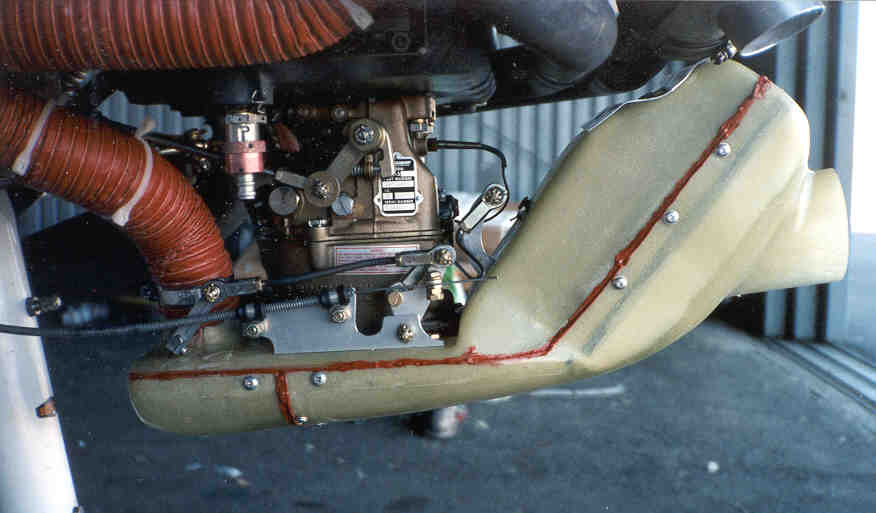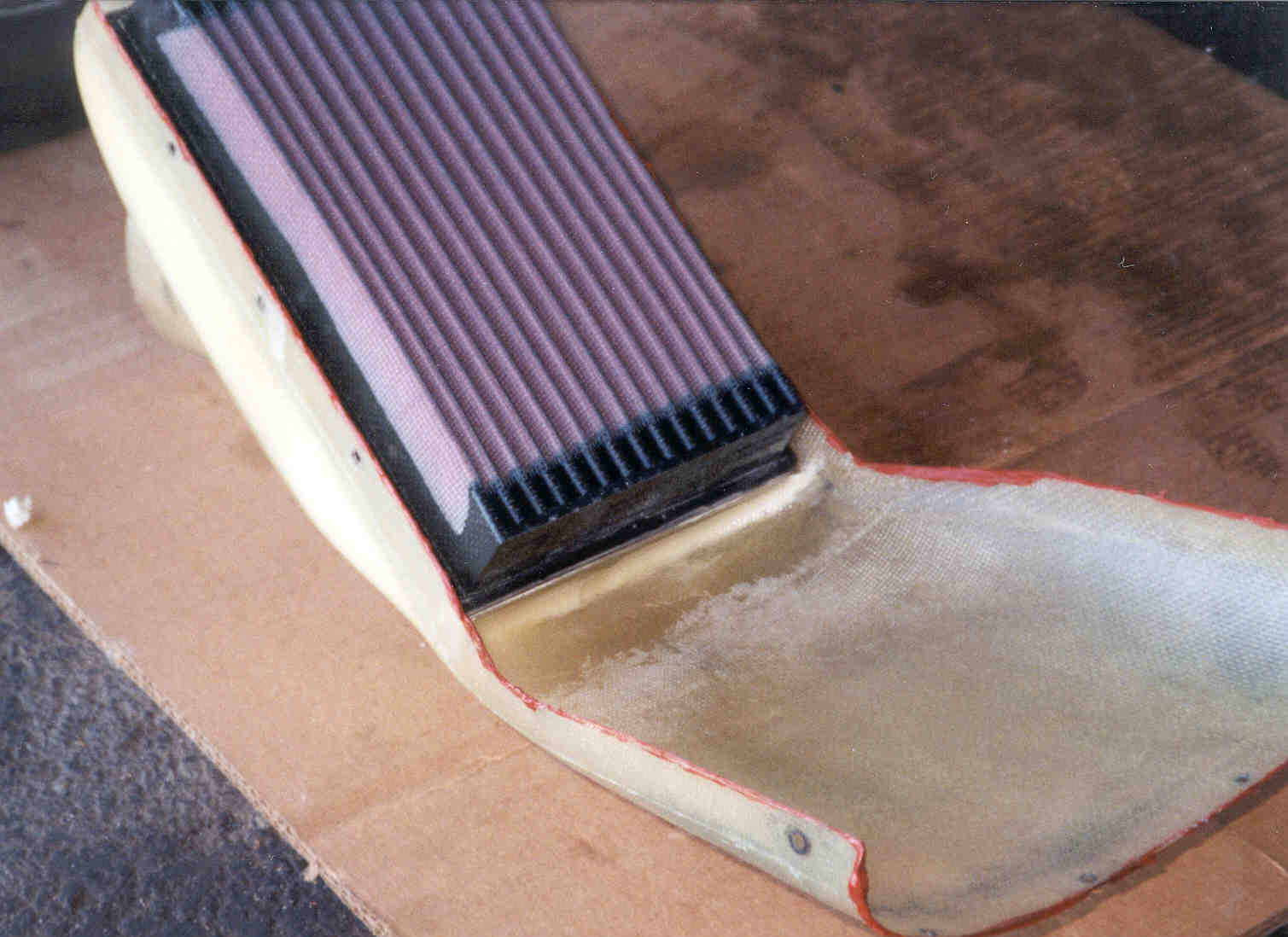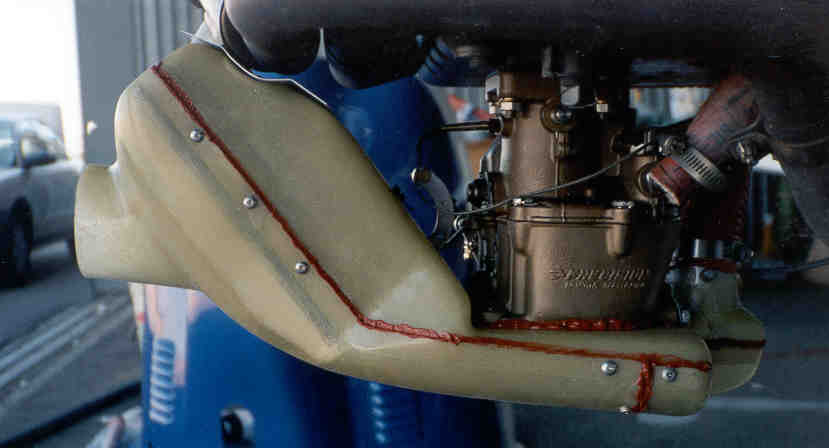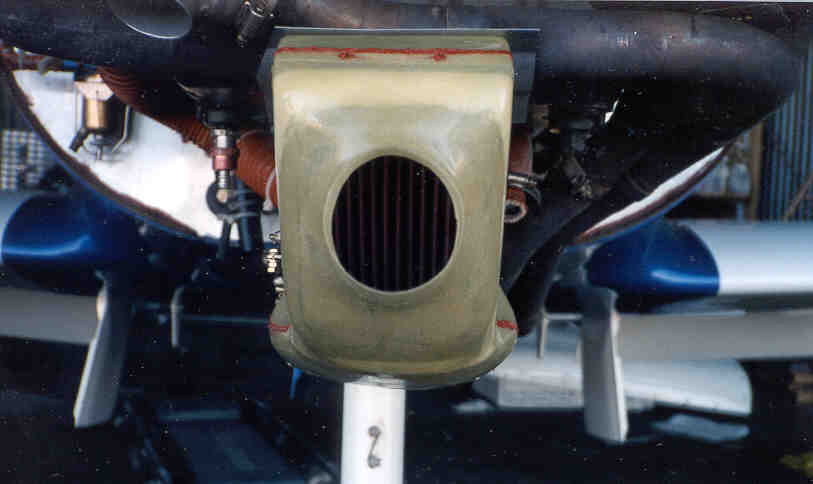|
|
Interested to know if anyone has opinions on ram air intake
Opinions:
Filtering will lengthen the life of your engine. Photos:
I reworked my system back in 2000 with good results. The attached
article was printed in LNN in the '00 time frame. The speeds quoted are
a little dated in that later improvements, elsewhere on the plane, have
produced further gains. The before and after comparison is still valid
however.
Chris Zavatson
N91CZ
360 std/900 hrs
Marv, I you would like, you can post these attachments to the LML website.
Chris
Induction System Improvement on the Lancair 360
8-21-2000
Chris Zavatson
It is rare to get something for nothing. The same holds true when trying to go faster in our already speedy little Lancairs. However, I just recently completed the most significant change to my 360 since it has been flying that has bent this rule just a little. I have increased cruise speed 10 kts and sea level power available at for takeoff has increased 16 hp. All this simply by changing the design of the carburetor air box and filter.
N91CZ has been flying for three years and has accumulated 500 hours. Aircraft performance has always been amazing, especially compared with anything I had previously flown, but I knew there was more untapped speed available. I have a carbureted Lycoming O360A1A installed, completely stock as delivered from the factory in Williamsport, PA. As a side note: Keeping the engine stock paid off for us when our first O360 was ruined by Jet-A contamination. Lycoming would not accept modified engines for repair or core credit.
Back to the story: Towards the latter portion of initial construction I wasnít completely satisfied with the induction system but was not feeling up to the task of redesigning the whole thing. I had used the Lancair supplied air box, plumbed in carb-heat and installed a filter. The foam filter was held between wire mesh screens in the air box. I had installed a 3 inch diameter tube section in the cowling for the carburetor air inlet, but found no easy way to seal this to the non round cross section of the air box. I flew with this set up for nearly three years during which time four events changed my cruise speed. The first three were fairly painless: Painting the plane, reducing the spinner to prop gap and adding AvBlend to the oil each added just over 1 knot. This put us at 199 KTAS, just short of that nice round 200 but still respectable. The fourth event that affected our cruise speed prompted me to get working on a new induction system. When we had to replace our 300 hour factory new O-360 for another factory new O-360 because of Jet fuel contamination, we were disappointed to emerge with a 3 knot drop in cruise speed. We had slipped back to 196 KTAS due to bad luck with contaminated avgas and engine manufacturing tolerances.
From time to time, I had pondered the idea of completely redoing the intake system in order to first replace the foam filter and secondly to seal the induction system to the cowling. Changing the foam filter for something a little better such as a K&N filter would improve filtering and lower the inlet restriction. I had never considered flying without a filter as an option. (After retrieving little pebbles up to 1/16Ē in diameter out of the filter, I was glad the filter was in place.) The second goal of sealing the induction system would allow me to capture ram pressure, which is significant at our speeds. I couldnít stand going slower than I had before so I took up the air box project in earnest. I searched through a K&N catalog to find the largest size filter I could physically fit in the available volume. The filter area opens to about 5.5 times the inlet area and greatly reduces losses across the filter element. There isnít a lot of space given how tight the cowling hugs the engine. Nevertheless, I was able to squeeze out a larger surface area by significantly canting the filter forward. The total filter area was doubled over the previous design and the filter media improved enormously in switching from foam to K&N. I built up a plug around the volume of my chosen filter, the intake requirements of the carburetor and carburetor heat access. This plug could be bolted up to the carburetor to check for any interference and to verify alignment with the air intake. The next step was molding the plug. The mold was made in five pieces, which allows me to produce interlocking parts. The air box had to be made up in three pieces given its geometry; otherwise the overlapping sections would not allow disassembly. The large area of the filter necessitated relocating the carburetor heat inlet port. Doing so made the plumbing a bit more difficult. In the previous design a single large hinged flap would open carb heat and block off intake air simultaneously. Now this was no longer possible. A butterfly valve at the back of the air box now controls heated air, while a separate hinged valve behind the filter shuts off ram air. If you donít block the ram air intake, carburetor heat air will be forced to flow backwards from the air box to the heat muff and into the cowling. The two valves are connected with a linkage that actuates both valves in unison.
The performance results were as good as I could have hoped for; I gained two inches of MP at the lower altitudes. This tapers down to 1.2 in at 17,500í. My cruise speed increased 5 kts down low and 10 kts up high. The chart compares full throttle manifold pressure readings for the new air box with standard atmospheric pressure, the Lycoming zero ram engine performance(shows induction losses) and the old air box. The difference between the new air box curve and the zero ram performance curve reveals how much ram pressure is being captured. Ram pressure even exceeds induction losses except when IAS is low (take off and high altitude).
An additional benefit is improved cooling despite the higher power being produced. Any pressure escaping from the inlet to air box transition pressurizes the cowling below the engine. This of course opposes cooling air coming through the cooling fins from above.
I have looked at many induction systems on 235/320/360s and have found this to be one of the most varied installations on our airframes. Many installations start out with some sort of sealed induction system. Some have filters others do not.
I found it quite interesting to be able to compare the before and after data. More speed is always good. More speed for free is even better.
Chris Zavatson

Airbox Right Side.jpg

bot-with-filter.jpg

Airbox Left Side.jpg

Airbox Inlet.jpg

graph.gif
|
|